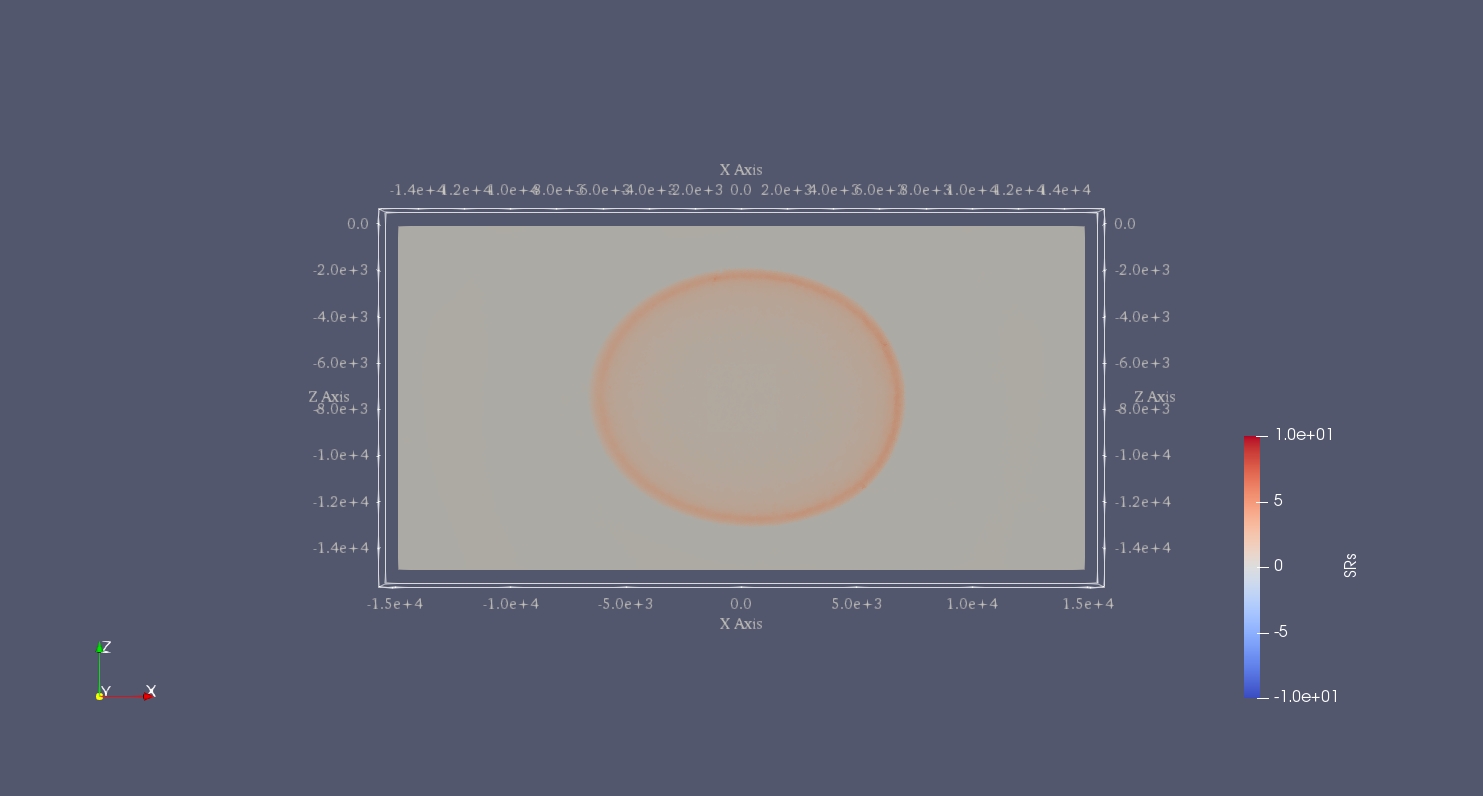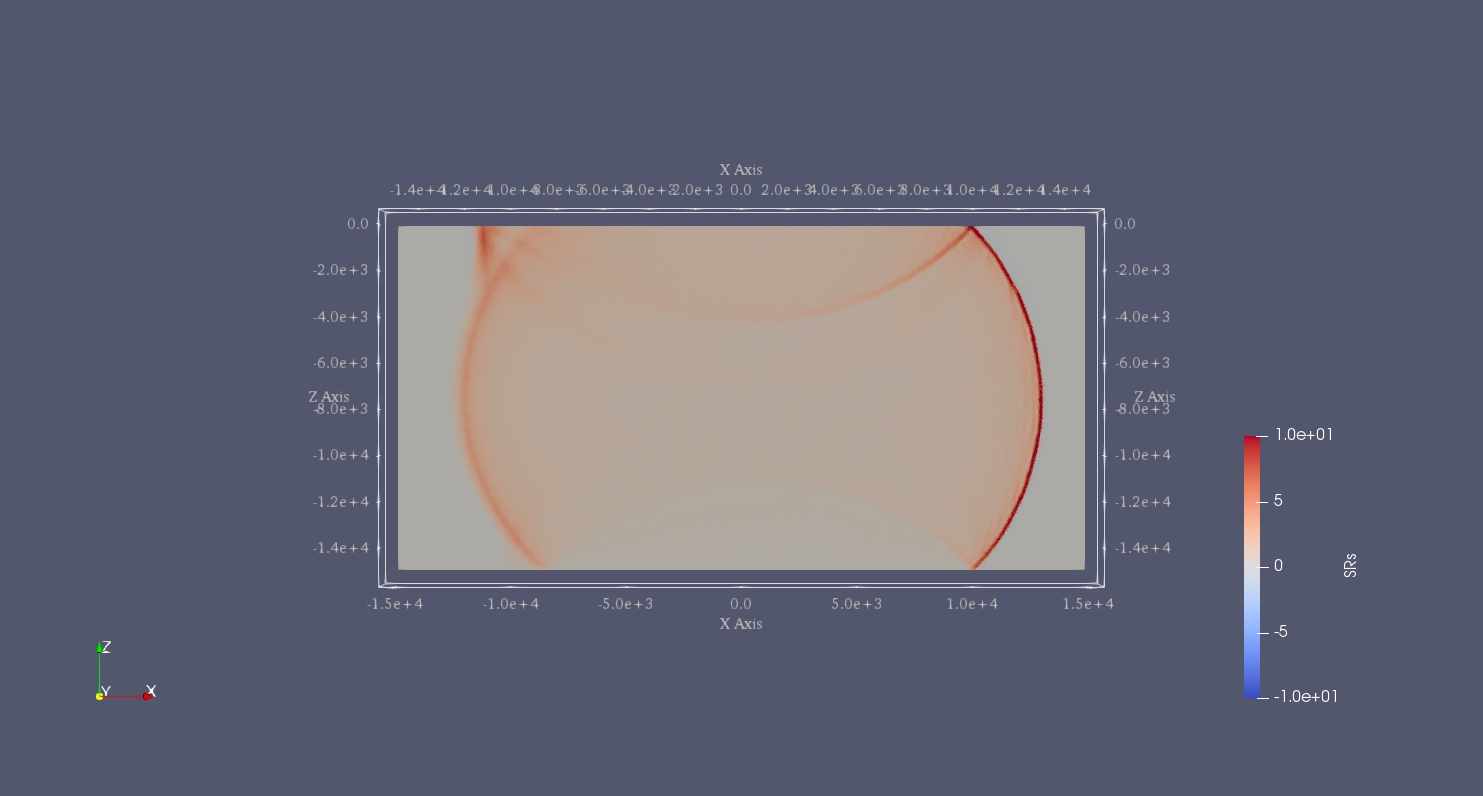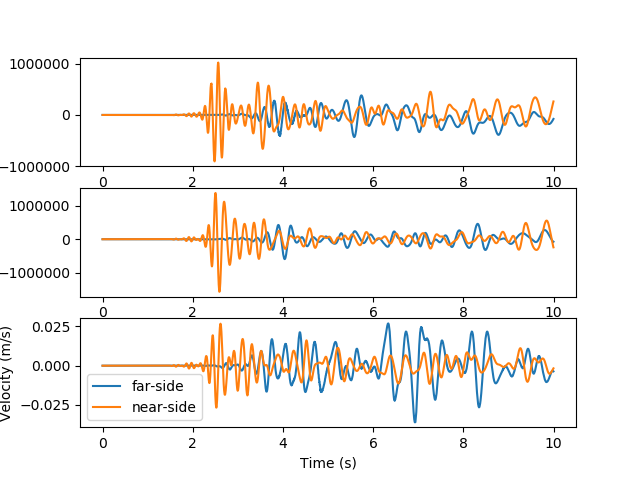SCEC TPV6
TPV6 is intended to reside in the “well-posed” regime for bimaterial problems and so uses a very high shear modulus (density*vs*vs) contrast. Material properties are homogeneous within each side of the fault, but change when one traverses to the other side of the fault.
Parameter |
Description |
Value |
Unit |
|---|---|---|---|
Vp |
P velocity of the far side |
3750 |
m/s |
Vs |
S velocity of the far side |
2165 |
m/s |
\(\rho\) |
density of the far side |
225 |
kg/m3 |
Vp |
P velocity of the near side |
6000 |
m/s |
Vs |
S velocity of the near side |
3464 |
m/s |
\(\rho\) |
density of the near side |
2670 |
kg/m3 |
Table: Table of bi-material parameters in Tpv6.
Geometry
TPV6 uses the same geometry as TPV5. The fault within the three-dimensional medium is a vertical right-lateral strike-slip planar fault that resides in a half-space. The fault reaches the Earth’s surface. The rupture is allowed within a rectangular area that is 30000 m long \(\times\) 15000 m deep. The bottom boundary of and the right and left ends of the allowed 30000 m \(\times\) 15000 m rupture area are defined by a strength barrier. The nucleation point is centered both along-dip and along-strike of the 30000m \(\times\) 15000m rupture area, on the fault plane, at 15000m along-strike and 7500m depth.
Parameters
TPV6 uses a similar parameter setup as TPV5 except for the bulk parameters.
Parameter |
Description |
Value |
Unit |
|---|---|---|---|
\(\rho\) |
density of the far side |
2225 |
kg/m3 |
\(\lambda\) |
Lame parameter of the far side |
10.4 |
GPa |
\(\mu\) |
Lame parameter of the far side |
10.4 |
GPa |
\(\rho\) |
density of the near side |
2670 |
kg/m3 |
\(\lambda\) |
Lame parameter of the near side |
32 |
GPa |
\(\mu\) |
Lame parameter of the near side |
32 |
GPa |
Table: Table of bi-material parameters used in SeisSol for Tpv6.
Results
Figure [fig:tpv6-4s] and [fig:tpv6-7s] show the fault slip rate at 4 s and 7 s, respectively. The slip front is asymmetric when compared with TPV5 (Figure [fig:tpv5-4s]). Figure [fig:tpv6_velocity] shows velocity recorded at two off-fault receivers. The wave picks arrives at the far-side receiver lower than those at the near-side receiver.

Fault slip rate at 4 seconds in the along-strike direction in TPV6.

Fault slip rate at 7 seconds in the along-strike direction in TPV6.
